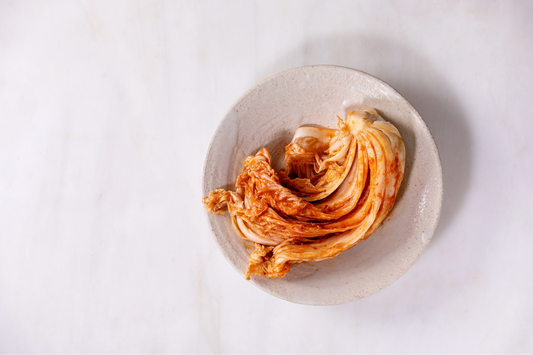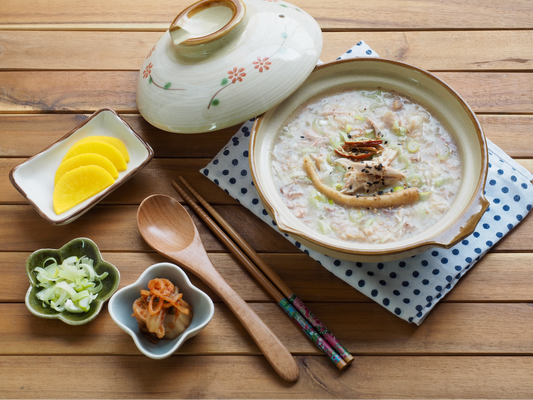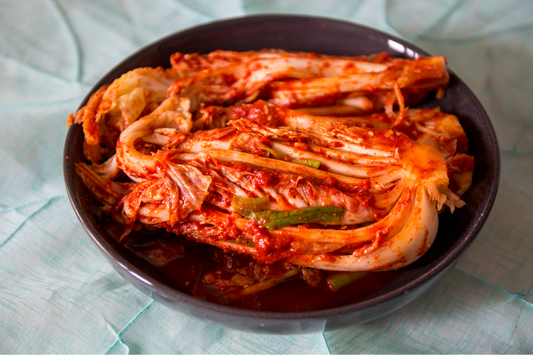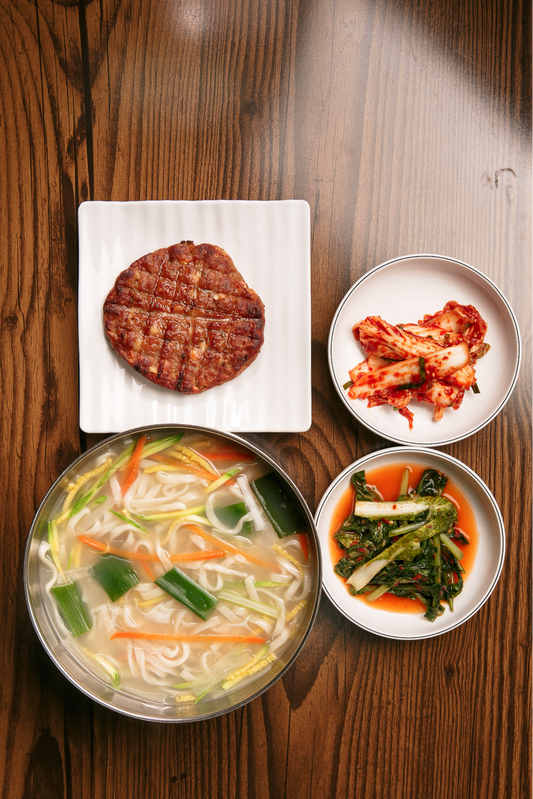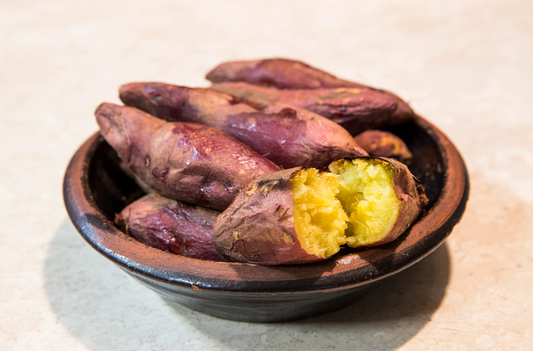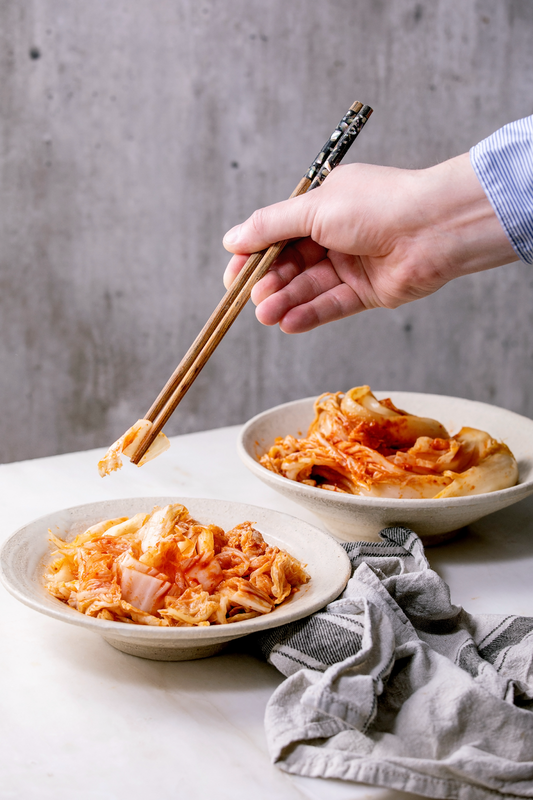Imagine the tangy punch of kimchi pairing with Japanese-Chinese food. With NikanKitchen.com, Asian food fans can explore new kimchi pairings. Try it with the comforting Jjajangmyeon, fresh sushi, hearty Donburi, or warm Udon. Kimchi brings these dishes together with its unique flavor.
The easy access to Asian food online helps us mix kimchi with other flavors. This trend is about merging Asian food traditions. With kimchi, dishes from Korea and Japan-China taste even better. It shows how food can connect cultures.
Key Takeaways
- The versatility of kimchi as an accompaniment in various Asian cuisine contexts.
- Insights into how kimchi enhances the flavors of traditional Japanese-Chinese dishes.
- Understanding the trend of combining fermented foods with mainstream Asian meals.
- Practical tips for creating your own kimchi pairing to elevate home cooking.
- The role of online platforms like NikanKitchen.com in popularizing unique Asian culinary products.
Jjajangmyeon: The Perfect Pairing of Black Bean Noodles and Kimchi
Jjajangmyeon with kimchi captures the heart of Korean-Chinese fusion cuisine. It pairs the savory black bean noodles with spicy, vibrant kimchi. This creates a taste adventure that is both unique and engaging.
Jjajangmyeon is now as common as pizza delivery around the world. It shines during Korea's Black Day, highlighting its comforting appeal. The sauce mixes pork, onions, and zucchini with sugar. This mixture beautifully complements the boldness of kimchi, resulting in a fulfilling and rejuvenating meal.
The combination adds a special touch to Korean kimchi with signature Asian dishes. It celebrates the rich traditions of both Korean and Chinese food. Jjajangmyeon in a meal underlines cultural pride, and kimchi introduces health perks. Together, they offer an extraordinary journey of taste and tradition with every bite.
For those eager to dive into Asian cuisine, jjajangmyeon and kimchi is a must-try. These dishes represent the essence of comfort food in many Asian homes. They also draw food lovers into a rich culinary story that bridges generations and places.
The Taste and Characteristics of Jjajangmyeon
Jjajangmyeon, a favorite in Korean and Korean-Chinese food, is a symbol of comfort and nostalgia. It was created in the early 1900s by a Chinese chef in Incheon. This dish mixes Korea's bold tastes with China's cooking methods. The thick, savory black bean sauce, chunjang, coats chewy noodles. Each bite is full of flavor. Variations like Gan-Jajangmyeon and Samseon-Gan-Jajangmyeon add twists to the classic.
A deep dive into the flavors and texture of Jjajangmyeon
The sauce of Jjajangmyeon is rich and savory. It goes well with the zesty tastes of kimchi. This makes eating Jjajangmyeon and kimchi with Chinese foods a great experience. Its flavor is strong but not spicy. This makes it a hit with kids and those who prefer milder foods. It's like America's pizza but in Korea.
April 14th is Black Day in Korea, a day for eating Jjajangmyeon. It's a fun way to celebrate being single. The dish is also in over 20 K-Dramas. This has made it more popular and shown the joy of eating together. People often copy these TV meal gatherings, making Jjajangmyeon a way to bring people together.
Jjajangmyeon can come with different noodles like hand-pulled, kalguksu, or udon. But it always keeps its comforting taste. Common black bean pastes used are Jinmi Chunjang, ShingSong, or CJ. This dish is a perfect mix of Korean-Chinese flavors.

Flavor Harmony Between Jjajangmyeon and Kimchi
The mix of jjajangmyeon and kimchi creates an exciting balance. It celebrates the rich taste of Korean-Chinese dishes and the zest of Korean kimchi. Jjajangmyeon has thick noodles and a hearty black bean sauce. It combines minced pork and veggies, making a savory dish. When served with the sharp, spicy taste of kimchi, it gives a tangy contrast. This lifts the whole flavor of the meal.
How the sharp, spicy notes of kimchi balance the rich, savory black bean sauce
Korean food loves to mix textures and tastes. This brings dishes alive with complexity and surprise. With jjajangmyeon, the black bean sauce's sweet taste coats your mouth. Adding kimchi brings in a spicy kick. It clears the taste buds with its crisp, fermented touch. It adds a burst of heat. This shows how well kimchi pairs with other foods, each enhancing the other.
Adding kimchi to Chinese dishes like jjajangmyeon opens new flavors. Whether using cabbage or radish kimchi, these zesty sides celebrate Korean food. They also make the rich Chinese sauces more lively.
The combo of jjajangmyeon and kimchi does more than complement each other. It turns meals into a vibrant mix of flavors that are greater together. This unique cooking chemistry makes kimchi a captivating part of Asian cuisine.

Tips and Recipe for Pairing Jjajangmyeon with Kimchi
Pairing kimchi with jjajangmyeon brings a delightful blend of flavors. This combination can enchant anyone's taste. Knowing how to mix these tastes well guarantees a satisfying meal.
Tips for enjoying kimchi with Jjajangmyeon for the best flavor experience
For a food adventure, choose the right kimchi for jjajangmyeon. Aged kimchi, which is more fermented, offers a deep tang and strong flavors. It complements the savory, sweet tones of the black bean sauce in jjajangmyeon. This pairing makes the dish more complex but balanced with spicy kimchi.
To add kimchi to jjajangmyeon, mix about 1/2 cup of it finely chopped into the sauce as it cooks. This softens the kimchi and infuses the sauce with its unique taste. For extra spice, add a pinch of Korean chili flakes to adjust the heat to your liking.
When adding kimchi to jjajangmyeon, consider the dish's main ingredients. A traditional jjajangmyeon has lots of pork, noodles, and vegetables with chunjang, a creamy black bean paste. These elements let the kimchi stand out in texture and flavor.
To complete the meal, serve it with a simple cucumber salad. Dress it with vinegar and a bit of sugar. This provides a fresh, cool balance to the spicy jjajangmyeon and kimchi. Such pairings highlight the richness of Korean and Chinese cuisines, making each meal a flavorful journey.
Sushi: The Delicate Harmony of Sushi and Kimchi
Exploring the sushi kimchi harmony shows an exciting mix of simple sushi and bold kimchi. This combination creates a new flavor experience. It enhances seafood in sushi with kimchi's tangy taste.
Kimchi with seafood dishes, like sushi, shows kimchi's worldwide love. Kimchi adds a spicy kick to sushi's fresh taste. This mix satisfies those looking for adventure, while respecting the original foods.
When thinking of kimchi with Japanese food, you might just see it as an extra. But the real wonder is when kimchi's flavors blend perfectly with Japanese food. This mix respects both cultures.
A fusion restaurant's menu highlights this trend well. Dragon Roll and Garlic Tuna Roll get a kimchi twist. This twist surprises diners and makes them see sushi differently. Kimchi adds new flavors and good probiotics.
The mix of kimchi with seafood dishes is more than food. It's a chat between cultures. It encourages diners to try new things. This blend combines flavors, histories, and traditions.
The charm of sushi kimchi harmony is in its balance. Each dish becomes a canvas for kimchi's boldness to enhance sushi's finesse. This partnership offers a memorable dining experience and a fresh view on Korean and Japanese food arts.
The Taste and Variety of Sushi
Sushi is an art that mixes traditional and new tastes in exciting ways. It has many flavors that match well with kimchi's zest. This food is key in Asian cuisine, with a wide range appealing to many tastes. It makes sushi eating fun for both beginners and experts.
Overview of the different types of sushi and their flavor profiles
There are many kinds of sushi, each with its own taste and look. Nigiri features rice balls with fish on top. Its flavors are simple but deep, reflecting the sea. The mix of fish and rice vinegar tastes creates a delicate, memorable balance.
In contrast, rolls like the California Roll bring different textures and tastes. Ingredients like cucumber and avocado add to the sushi's complexity. Asian food and kimchi give these rolls a bold twist. Kimchi adds a spicy, rich layer without overpowering the sushi.
Fusion sushi, like the kimchi sushi roll, includes kimchi with cucumber, carrot, and avocado. This style steps away from traditional sushi. It blends the crisp of vegetables with spicy fermented cabbage. This highlights the unique sushi kimchi harmony.
Mixing various sushi types with kimchi shows sushi's endless possibilities. It combines different flavors that please the taste buds and expands one's love for sushi and kimchi. Sushi becomes more than traditional food. It's a journey of taste that pushes its limits.
The mix of sushi and kimchi opens a new chapter in Asian food and kimchi. It shows even old culinary traditions can explore new flavors. For food lovers, this blend is a journey worth taking.

Flavor Balance Between Sushi and Kimchi
Mixing kimchi with seafood dishes like sushi offers a wonderful mix of new and traditional flavors. Sushi's history goes back to the second century CE. It has become a global favorite for its refined flavors.
Kimchi brings a strong umami taste and a signature spiciness to the table. It doesn't just sit on the side but boosts the sushi-eating experience. This mix respects sushi's subtle flavor while adding a bold Korean twist that works well together.
How kimchi adds a spicy and umami depth to fresh sushi, balancing its delicate flavors
Top sushi chefs, including those from Matsuhisa, have found that kimchi complements sushi nicely. It adds balance without overwhelming the dish's natural flavors. Sushi is all about minimalism and exactness. The kimchi's seasonings mix well with the fish, improving the dish while keeping the flavors sushi fans love.
If you're curious about kimchi pairing tips, start with less spicy kimchi types with sushi. This approach ensures the bold spices improve the meal instead of taking it over. It's a great way to bring kimchi into Japanese food traditions.
This combining of food traditions enriches the palette and honors both Korean and Japanese dishes. So, pairing kimchi with sushi creates a wonderful taste experience for fans of both cuisines.

Tips and Recipe for Pairing Sushi with Kimchi
Mixing sushi and kimchi brings a new twist to classic sushi meals. Learning how to pair sushi with kimchi, you find new flavors kimchi adds to sushi. It's key to pick sushi that goes well with kimchi's strong and spicy taste.
Suggestions for pairing specific types of sushi with kimchi for a complementary experience
To blend them well, try fatty tuna (otoro) or sweet eel (unagi). These have a big taste that matches kimchi's spicy kick. This mix makes your taste buds happy. Make sure the kimchi and sushi flavors are balanced.
For rolls, start with kimchi fried rice. Add kimchi, sesame oil, soy sauce, and kimchi juice to the rice. This boosts the rice with tang and spice, enhancing the sushi's freshness.
For a tasty sushi roll, lay out a nori sheet. Spread the kimchi rice but leave room at the edge. Lay tuna or eel on the rice, add a strip of mozzarella, and roll it up. Mozzarella's creamy flavor contrasts well with the spicy rice.
Finish the rolls with sesame seeds and a bit of sesame oil for extra taste. Serve with pickled veggies to refresh your mouth between bites. This makes each sushi piece as good as the first.
Using these kimchi pairing tips with sushi adds new tastes. It blends Japanese sushi and Korean flavors into a tasty, unique dish.





